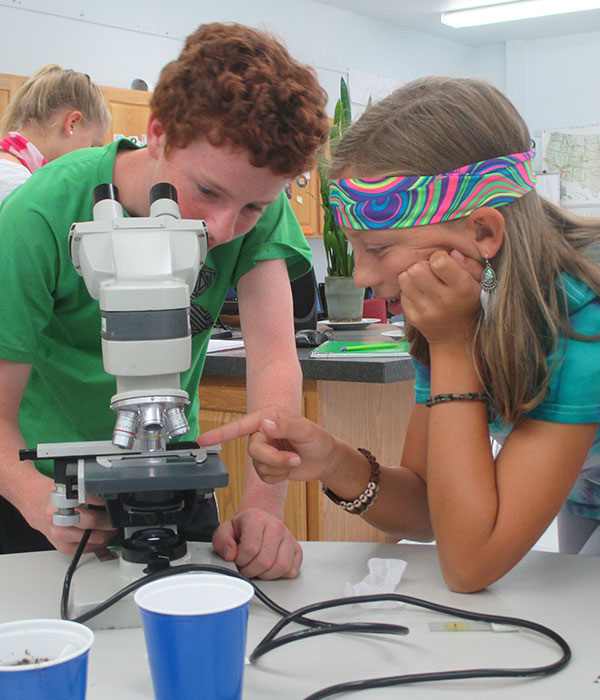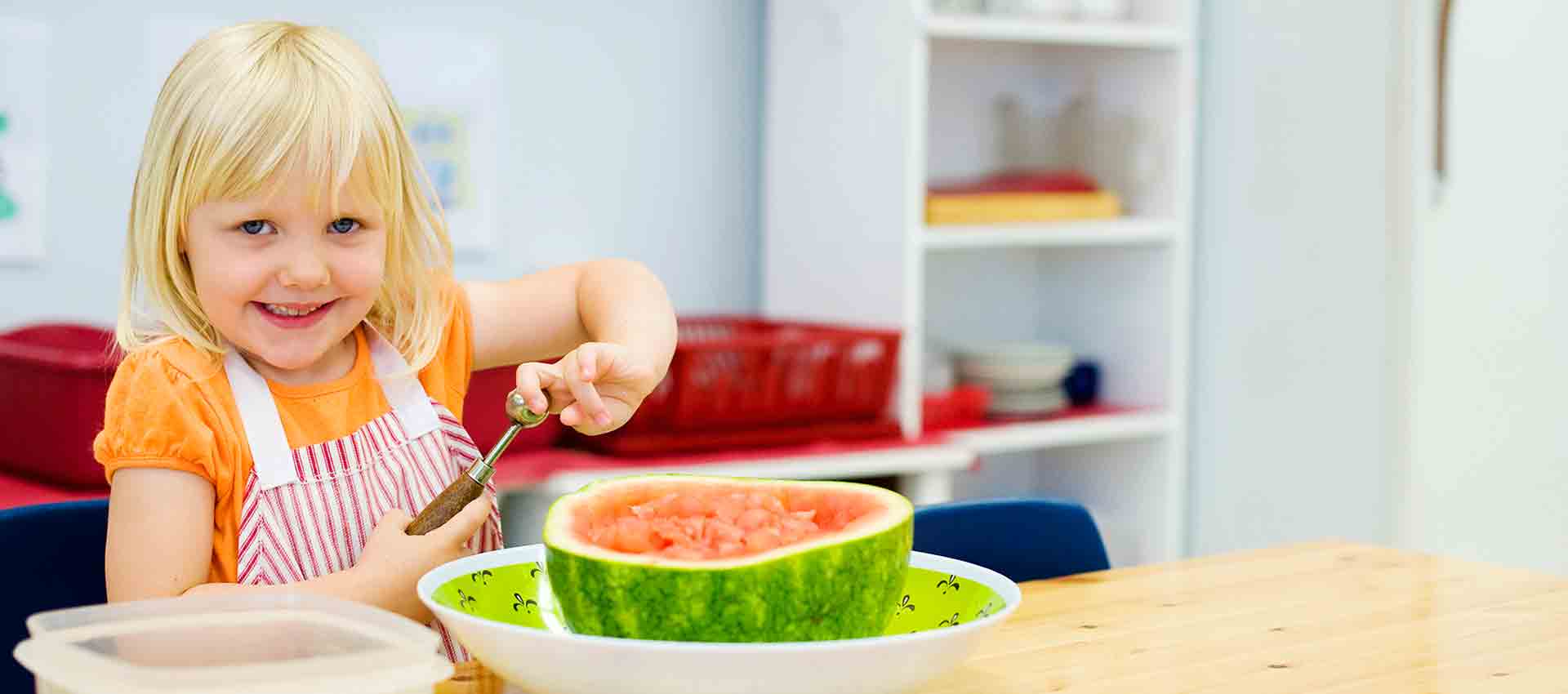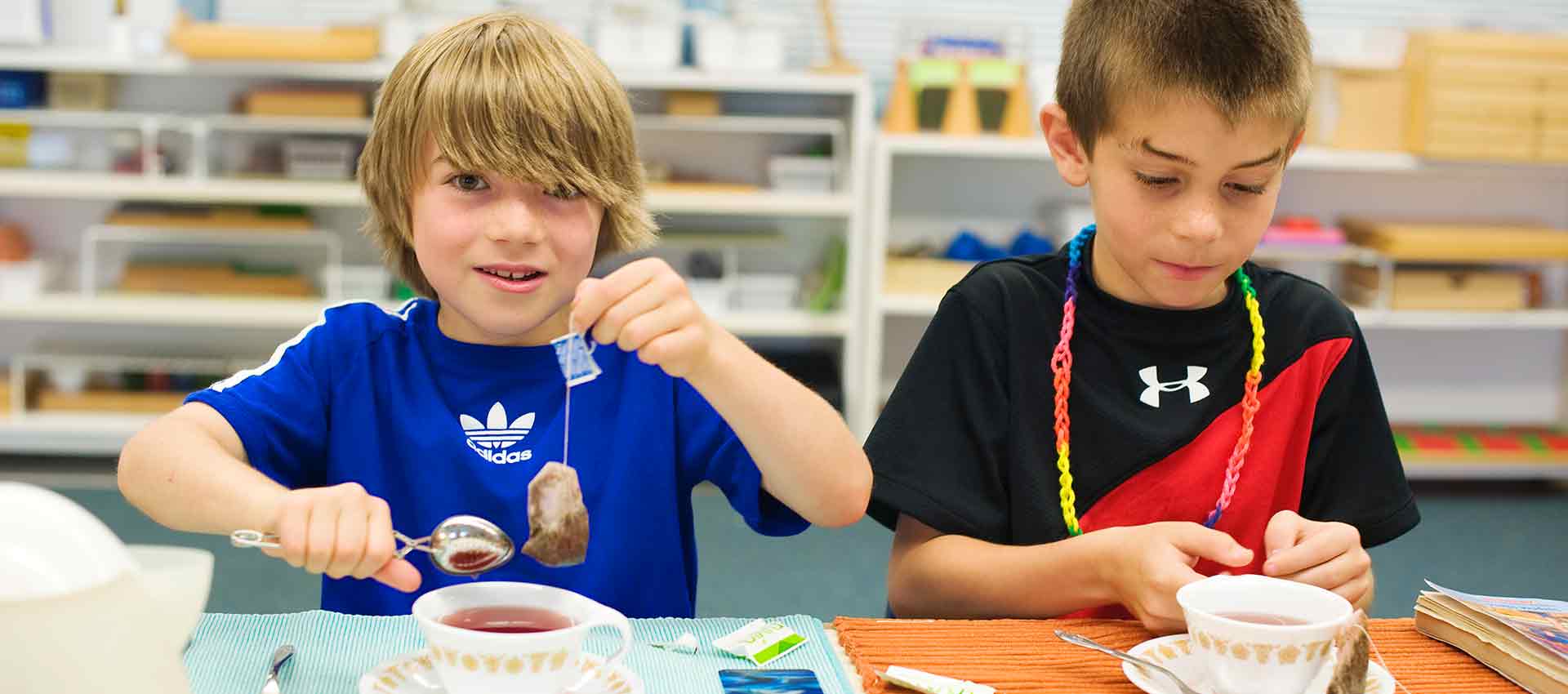
Dr. Maria Montessori based her philosophy on the principles of independence, observation, following the child, correcting the child, the prepared environment and the absorbent mind. The Montessori classroom is child centered and under the direction of a trained guide these principles are incorporated.
“Never help a child with a task at which he feels [the child] can succeed.” – Dr. Maria Montessori
Independence – By giving children opportunities to do things on their own in the classroom, the guide is promoting self-confidence and esteem that the children will carry throughout their life.

“Follow the child. They will show you what they need to do, what they need to develop in themselves and what area they need to be challenged in. The aim of the children who persevere in their work with an object is certainly not to ‘learn’; they are drawn to it by the needs of their inner life, which must be recognized and developed by its means.” – Dr. Maria Montessori
In order to follow the child, the Montessori guide is trained to observe children to formulate individualized plans that meet each child’s academic and social-emotional needs. If a child starts banging objects, it means there is a need for gross motor activity and the teacher can introduce a drum, a much more appropriate material to bang.
Following the child means being non-directive, do not tell them what to do all the time. Offer the child choices. Allow the child the freedom to make choices based on his current wants or needs.

In a Montessori classroom, the guide does not raise their voice but instead offers solutions calmly. If a child spills her glass of water, the guide will simply direct her to get a cloth in order to wipe up the spill. It is the guide’s responsibility to teach the child in a nice manner.
Giving the children freedom and choice, supporting them in their choice by making sure they are safe, feeding their inquiring minds in a way that they can understand and observing their needs and fulfilling these is key to children reaching their fullest potential.

“The teacher’s first duty is to watch over the environment, and this takes precedence over all the rest. Its influence is indirect, but unless it be well done there will be no effective and permanent results of any kind, physical, intellectual or spiritual.” – Dr. Maria Montessori.
The guide’s ability to prepare the environment is their link to teaching the children. The environment must be prepared in a beautiful manner that it invites the children to learn from within it. Children’s minds will absorb the information around them as their senses are stimulated. The materials on the shelves need to be precise and appealing inviting them to learn. The environment has to be safe for the child to explore freely.




